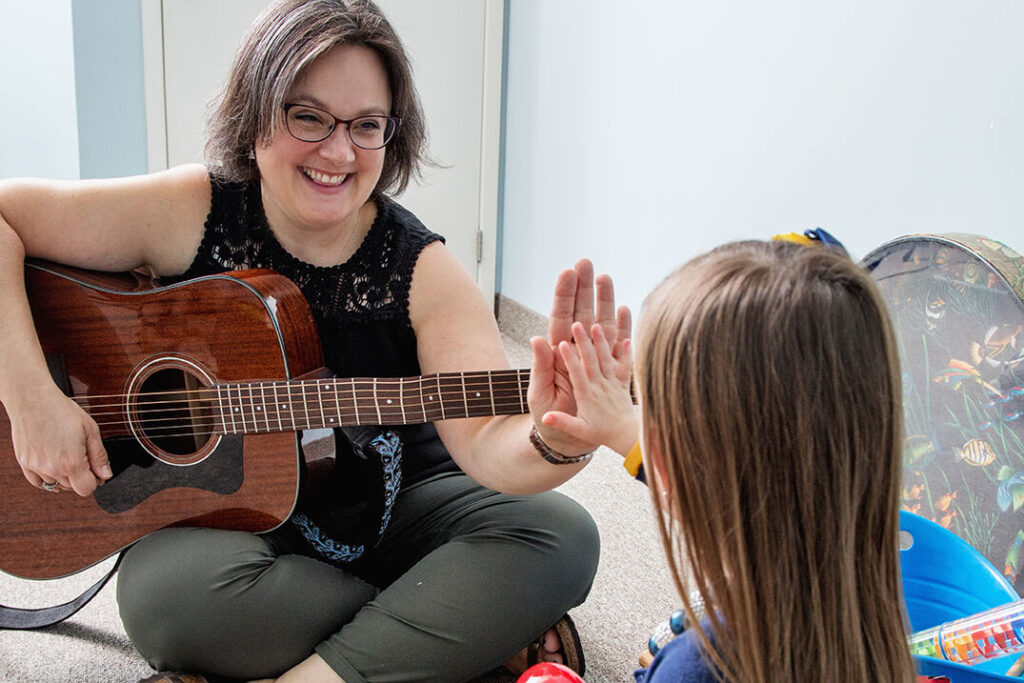Supporting Autistic Clients in Music Therapy

April is World Autism Month, and April 2nd is World Autism Day. In honour of this month, I’d like to share 5 ways to support autistic clients in music therapy.
Honour Person-First or Identity-First Language Preference
On our client intake forms, we ask for any preferences regarding significant identifiers. This can include person-first language (“person with autism”) or identity-first language (“autistic person”). There are many reasons why someone would choose one preference over the other, and we do our best to respect these personal choices as much as possible.
Create a Supportive Sensory Music Therapy Environment
Many autistic clients also have sensory processing challenges. Minimizing potential distractions for autistic clients can help create a more conducive music therapy space. This can include soundproofing to reduce outside noise or boomy echo inside the room, not using harsh lighting, having soft carpeting, using calming wall paint colours, or organizing the instruments in the space in a pleasing manner.
Encourage Independence and Autonomy By Giving Choices
Involving our client in decision making during their music therapy sessions is an important step in teaching necessary life skills. There are many ways that a music therapist can give a client choice. For example, the order of activities in a session, choosing their preferred music to listen to, choosing which instrument they would like to play, and even allowing them to take the lead at times.
Use A Resource-Oriented Approach
Not all autistic behaviours need to be changed. This is an important part of autism advocacy. Rather, many behaviours can be appreciated and celebrated as special. This involves using music therapy that focuses on one’s strengths, instead of punishing “bad” behaviour. This creates positive reinforcement that can give clients confidence in their abilities.
Use Multi-Sensory Activities
While music is of course the main component of a music therapy session, there are many strategies we use to stimulate other senses for autistic clients. This can include visual aids such as pictures to accompany songs, tactile feel with music instruments, motor movement activities, and even (more rarely) smell and taste.
Autism Activists & Further Readings
If you are interested in learning from some first-hand accounts, here are some books by autistic authors sharing their own perspectives:
“Thinking In Pictures: My Life With Autism”, Temple Grandin
“Look Me In The Eye: My Life With Asperger’s”, John Elder Robison
“Unmasking Autism: Discovering the New Faces of Neurodiversity”, Dr. Devon Price (available April 5th)
By Kimi Suzuki, MTA – Certified Music Therapist
